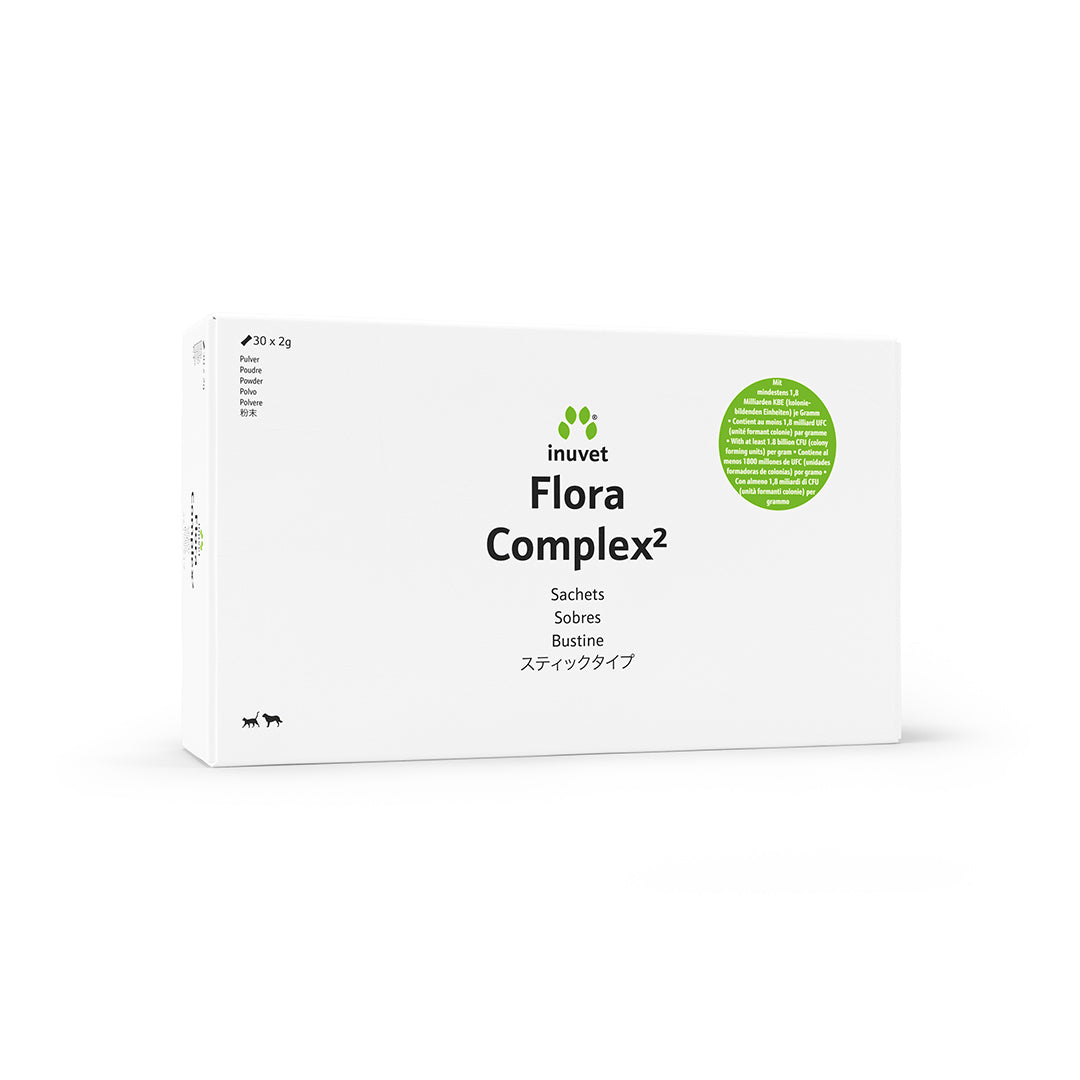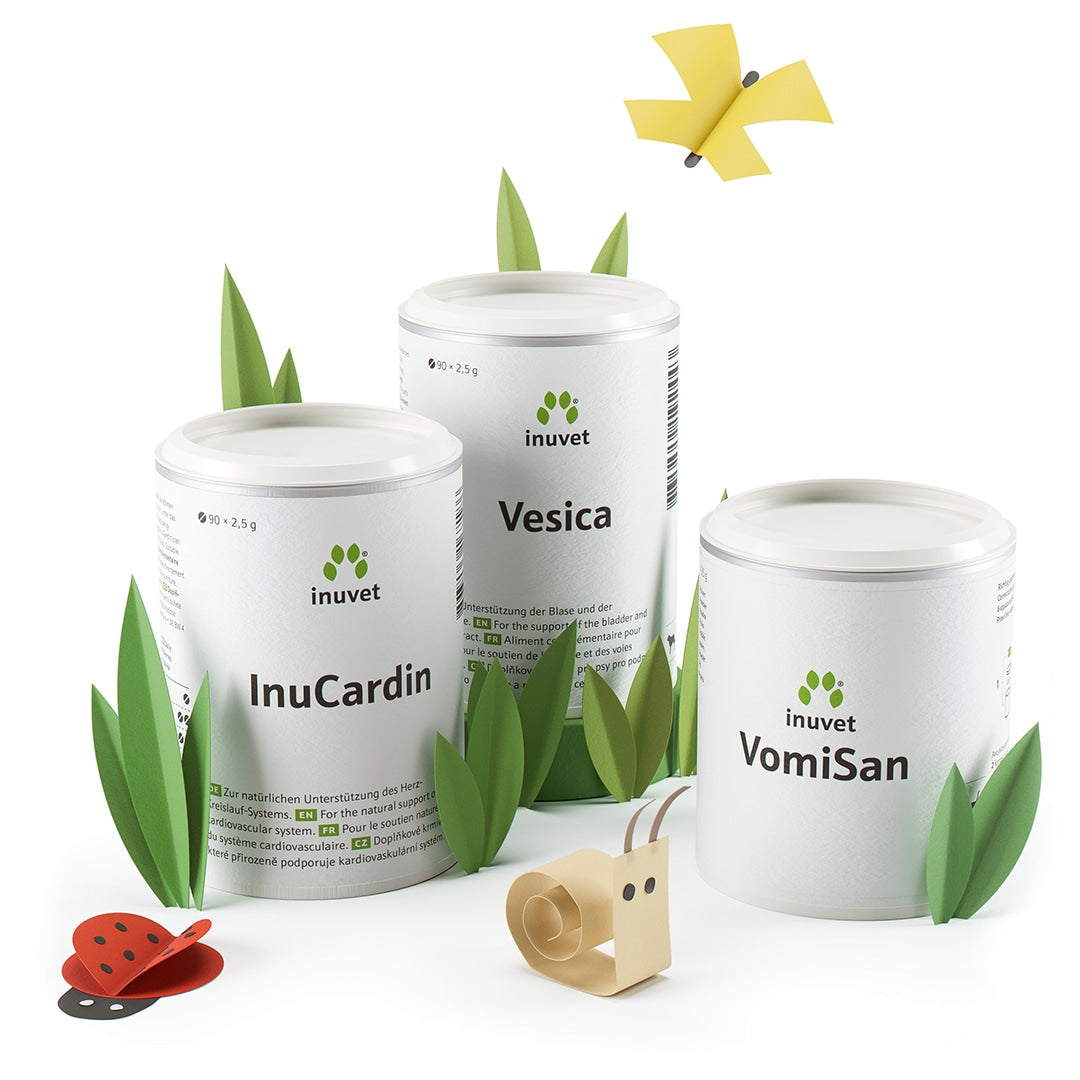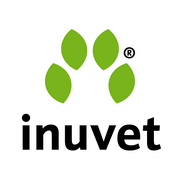
FloraComplex² powder sachets
Complementary feed for cats and dogs
- Helps to rebuild the intestinal flora.
- Contains two strains of probiotic cultures.
- Suitable for allergy sufferers and diabetics ‒ convenient sachets.
Are you a vet? Then you can register and order directly. For pet owners: Inuvet products are only available at veterinary practices, along with expert advice from the practice team.
Already registered? You can log in here.
Inulin (Prebiotic) Inulin belongs to the genus of prebiotics, that are not digestible by the body's own enzymes and are therefore a fermentable substrate for the bacteria of the intestinal flora. Inulin promotes the growth of beneficial intestinal bacteria such as Enterococcus faecium without benefitting pathogenic germs. Consequently, inulin is recognized as having a positive effect on the immune system. Organic acids are released when intestinal bacteria such as Enterococcus faecium metabolize inulin. These acids have a stabilizing effect on the intestinal microbiota. Studies conducted on puppies have shown that adding inulin to food reduces the colonization of Salmonellae.
Lactobacillus acidophilus (Probiotic Bacterial Cultures) Lactobacillus acidophilus is a facultatively anaerobic, gram-positive rod-shaped bacterium. It is one of the most well-researched probiotics for the health of dogs and cats. The bacterium produces lactic acid, improves stool consistency, and helps maintain a healthy gut flora. Additionally, Lactobacillus acidophilus modulates local immune defense and promotes a healthy intestinal epithelium.
Enterococcus faecium (Probiotic Bacterial Cultures) Enterococcus faecium cultures help to naturally build up the gut flora. They colonize the intestine and support the regulation of intestinal peristalsis. The cultures also help reduce the presence of pathogenic gut bacteria in the intestine. They compete with these for receptors on the intestinal epithelium and alter the luminal pH in such a way that the binding ability of pathogenic gut bacteria is affected. Especially in a weakened gut, harmful microorganisms can thus be displaced in favor of the natural gut flora.
Inulin (sourced from chicory, Jerusalem artichoke, artichoke or agave), sodium chloride
Crude protein (1.1%), crude ash (1.6%), crude fiber (1.4%), crude fat (< 0.3%)
| Cats | Number of sachets |
| <5kg | 0,5 |
| >5kg | 1 |
| Dogs | Number of sachets |
| <5kg | 0,5 |
| 5–10kg | 1 |
| 10–20kg | 1,5 |
| 20–30kg | 2 |
| 30–40kg | 2,5 | +10kg | +0,5 |
| 1x a day | |
| 1 sachet contains approx. 2.0g |
Intestinal flora stabilizers: Enterococcus faecium DSM 10663/NCIMB 10415 9x10^11 CFU, lactobacillus acidophilus CECT 4529 9x10^11 CFU
Keep out of reach of animals. Gluten-free. Vegan. Sugar-free. Made in Germany.
Do not store over 30°C. After opening, use within a few days. Once opened, close by folding. Store sachets in a dry place.
Cats, Dogs
Only in your practice
Do you spend a lot of time and energy advising your customers and recommending the right products? Are you also happy when the treatment works well, but are surprised when pet owners don't order recommended products from you, but instead order them online? Why don't you google it? You can find everything on the internet - except Inuvet products for sale. Sales are handled exclusively by your practice.

Mission: Green practice
Paper packaging
A current estimate is that 12 million tons of plastic waste ends up in the ocean every year. That has to change: With new Inuvet packaging, you as veterinarians get an ecological alternative for your patient owners.


